#genshin impact lore theory
Text
Okay so just a quick theory on how we might team up with each of the harbingers/how they will be playable.
Unlike Hoyo's other games, namely Honkai Star Rail and Honkai Impact 3rd, the characters in Genshin seem to have the need of two things currently - being alive, and being on 'good' terms with the Traveler. And of course being able to control elemental energy.
In order,
Pierro - unlikely to be playable imo, but if so we'd team up to take down celestia and likely convince him to be better in the future / maybe see eye to eye (haha pun)
Capitano - also feel unlikely to be playable (due to mask + rank + build) but am personally hoping he's playable. but likely a mutual understanding via honor / natlan abyss expansion or smth he is released at the same time and works with us in this expedition.
Dottore - unlikely dottore dottore is playable. feel like he'd get a super satisfying death scene w/ collei/diluc/scara/arle involved somehow. most likely diluc imo. but i think one of his segements will be playable, and will be one that defects from the rest and betrays them, more likely a younger segment.
Columbina - unlikely to be playable for a while, but if so i hope she doesn't have one of the seven elements in teyvat and has like a light/imaginary/dark/quantam element, or is pure physical damage somehow. I do think she will be playable, but maybe in later patches of natlan, likely to be very strange and off putting but perhaps never directly against us or for us? maybe also linked to a potential abyssal or dark sea region?
(if hoyo does release both capitano and columbina in the same patch i will cry.)
Arlecchino - Acquired. Will likely have future content in Snezhnaya/Khaenri'ah bcuz of foreshadowing. Also hoping to get more HOTH members in the future.
Pulcinella - feel like he'd be unlikely to be playable, but he also was in the travail trailer. can't imagine him getting along w traveler too well mainly cuz of his actions w the chasm, scara's line, arle's line, n what we've seen of him so far. but maybe, common interest would make him come to our side? he seems very rational - to the point of not being sympathetic at all imo, so maybe?
Scaramouche - Acquired, obv. Hopefully will have more development/roles in the future especially against the fatui. I want to find out if they had some way to bypass the irminsul deletion of his existence.
Sandrone - Okay, going out on a limb here real quick (its not quick). Bcuz all of the Fatui Harbinger's secondary titles (in this case, the marionette) Sandrone is not the feminine looking doll, but rather someone piloting the mech. Imo I think Sandrone is Alain Guillotine who is inside the ruin guard like mech and who made the kathryne's and the doll the mech carries around. I think this also lines up w Childe's voice line of Sandrone bcuz Alain Guillotine is envious of his relationship w his siblings since they are alive (unlike Mary Ann, who looks a suspiciously lot like the doll) and I think Sandrone aka Alain wont be playable but the Doll/Mary Ann will be and her story will be one of her breaking free of Sandrone. Maybe. This could also line up with Scara and Arle's VO's cuz it's stated Sandrone doesn't talk much/isn't really open so I think it is possible they don't know that Sandrone is actually not the doll but the man inside the mech or smth. I have more to this theory, but I might do this later.
Sandrone TLDR - Sandrone Marionette playable, the feminine doll, not the mech. Maybe mech in her attacks, but not the actually character.
La Signora - Look I'm a La Signora hopium believer, have been since the minute she died in 2021 - only way for her to be playable is for her to have a redesign and resurrection in natlan. 🙏 I'm not religious but I am praying for this. To any god who will listen. If not maybe when we 'reweave the threads of all fate' or whatever, we will get the chance to go back in time/partner with her. Maybe we will go back in time to the actual cataclysm - and actually wait there is the pierro and possible capitano connection too.
Pantalone - Due to popularity and build I want to say I feel like he'll be playable. Don't think he's loyal to the Fatui, very much leaning toward him being loyal to himself. Don't think he'd get a vision though, so I'm not sure. Maybe he'll be one who canonically uses a delusion/recieves a vision on screen/or even modified his body w Dottore's help to make him able to use elemental powers. I'd say either Geo or Hydro if so. Geo just fits idk man. As for him partnering with the traveler, I could see it being in snezhnaya as a way to take down the fatui, maybe he will partner w the HOTH or smth and put full support there. Idk he kinda gives me Adventurine vibes w in terms of gambling to get a win. Esp since every voice line mentions he's very ambitious, and arle said he isn't very rational.
Tenth Seat - Currently unknown and being theorized on. Imo most likely to be either a hexenzirkle member, previous seat of our sibling (with the name innamorati, while traditionally as lovers, in this case perhaps referring to platonic love for sibling? or the usual irony in that not loving romantically? so love but not love.) or the Tsaritsa going undercover as the 'Tenth Fatui Harbinger' and still being the Lover since she is pretty likely to be the Goddess of Love.
Tartaglia - Literally came in 1.1, will continue to be relevant in Snezhnaya. His second story quest will feature his family and be all cutesy in the beginning then bring area of the abyss connected to Snezhnaya, maybe. See Skirk too, maybe? Leads into her story quest and event with the region similar to Albedo and Dragonspine events? Maybe Skirk will be released with Hurricane Torilla's second story quest?
Anyway those are some of my convoluted thoughts, gotta go and get ready for work, any comments/reblogs/tags are appreciated bcuz i'd love hear other people's thoughts for future genshin lore theories/speculation.
#genshin impact#fatui#fatui harbingers#genshin lore#lore theory#genshin impact lore#genshin impact lore theory#theory#discussion#hoyoverse#but thats just a theory#a game theory#thanks for reading
6 notes
·
View notes
Text
youtube
I might’ve spoiled the plot of Natlan | Genshin Impact THEORY
In which I read so much lore that I gained the power to see the future (maybe)
This ended up being a real challenge to make - but it was also really fun! Please do lemme know what you reckon of these ideas, and whether y’all wanna see me pattern-recognition my way into several corkboards worth of theories about any other topics sometime down the line! (^^)/
(also: HAPPY NEW YEAR! 🥳🎉 Here's wishing y'all every good thing for 2024)
#artists on tumblr#abd illustrates#genshin impact#natlan#game theory#idek how to tag this one i've never made a vid like this before uhm-- sgdfksdf#anyway oh my GOD i have had so many brain bees about this topic for the longest time#ik making a half hour video about it is unhinged enough but the fact that nobody else seemed to be talking about some of the patterns#was drivin me BONKERS#im so normal about this lore y'all mhm#but also silly tho the energy of this one is#im really proud of it! it was wierdly scary to branch out from my usual content like this#so i do sincerely hope it's a fun watch (^^)/#i'd love to make more off-the-wall and like deep-dive type stuff like this sometime if it goes over well 💖#it also took-- sO LONG TO MAKE#full time video essayists are to be feared i have learned#Youtube
922 notes
·
View notes
Text
Don’t you ever wonder what kind of secrets and plot points Venti keeps hidden? He claims to be the weakest amongst the Seven-and that could be true given his whole 500 year slumber and poison and all- but he’s still a god. AND one of the original Seven. You gotta be good at SOMETHING to survive for this long…
He’s also the only archon so far that doesn’t have a second story quest so what is he hiding?! We have accounts of him literally shaping the land with ease from both the Golden Apple Archipelago events and his character stories. We know that he has close relationships with the Hexenzirkel and somehow managed to avoid conflict with them??? And there’s also the fact from the skyward sword series that he was originally a catalyst user before picking up the bow in honor of Amos. He’s pulling a Childe when it comes to weapons he currently uses and the ones he’s proficient in.
And don’t even get me started on his connection with Istharoth and Celestia! Mondstadt already has the Thousands Winds Temple AND the nameless island where both Venti and Istharoth were once worshipped. And from Before Sun and Moon, we know that the Thousand Winds (which Venti IS A PART OF) were once called the Thousand Winds of TIME, all of whom were created and controlled by Istharoth. AND THEN you have Venti suspiciously appearing in the right place at the right time again and again and again. He even self proclaimed knowing every song: past, present, and future. Hell he’s probably one of the only few beings in Teyvat who can naturally bypass Irminsul because of his songs: Nahida already shown it’s possible to save deleted info if rearranged into fiction so the same should work for songs and poetry. And there’s also what the hydro fungus in Nahida’s second story quest said about changing forms. That you need time for growth to occur. And Nahida - an ARCHON- had trouble maintaining her fungus form for even the short period of time. She was even told that to do so for longer, one would need to bypass time itself which is near impossible. AND YET VENTI CHANGED INTO THE FORM OF HIS FRIEND IMMEDIATELY AFTER RECEIVING HIS GNOSIS AND HAS YET TO CHANGE BACK OR TIRE FROM FATIGUE (as we know it). HOW STRONG IS HE. Sure, the yokai in Inazuma and Adepti in Liyue can all change into a human form, but we know in game that it takes a long time and steady energy to take on a human shape, and the Adepti all seem to have that ability naturally: there’s no bending the laws of nature if it’s already natural to them. So what’s Venti’s excuse?!
As for Celestia: there’s already written in the statue of Barbatos “the gateway to Celestia” and what not. And Khanreia! In the chasm AND in the Caribert quest, Barbatos and Mondstadt keep getting named dropped. According to Dainself, the city in the chasm is supposedly OLDER than Khanreia and possibly the Seven, yet BARBATOS of all beings is mentioned in the records you find??? And in Caribert, it’s a Mondstadtian woman who that one bloke had a child with. Never mind that Mondstadt is where Kaeya and Albedo - the two characters with confirmed Khanreian origins- end up! There’s also the fact that Khanreia seems to base its gods and names and whatever around Norse mythology….which has strong ties to GERMANIC HISTORY. WHICH MONDSTADT IS BASED OFF OF. And Enkanomiya, which was once ruled by Istaroth, is Greek origin. Suspicious considering all the connections to HERMES Venti keeps portraying. (And then there’s also a connection to all three places with the hexenzerkel with their Chinese names? Like I think I read somewhere that Alice is Aries(?)/Eris(?) and Nicole is actually Nike in the Chinese version? Which are very much based in Roman/Greek origins)
Oh and something I forgot to mention earlier with the whole Istharoth connection. Mondstadt’s saying “seeds of stories, brought by the wind, and cultivated through time”. SUSPICIOUS

Anyways, this has been my nonsensical Venti theory rant
And you’re stuck with me @worldsokayestmagicalgirl
#theory rant#seriously this is me typing whatever comes to mind#I have questions and Mihoyo needs to give me answers#this isn’t even everything#mutual lore rant kidnapping#Alyssa and I take turns with the conspiracy boards#genshin impact
799 notes
·
View notes
Text
i think the funniest thing about Genshin is how the storyline completely fucks you over.
the beginning is pretty straightforward, honestly: you and your sibling were traveling to this world and had a fight with a god that you lost. you crash landed and ended up in a coma. woke up, your sibling is missing, and you go off to talk to different god and try and find your sibling.
if you pay even mild attention to the storyline and fast-forward a couple adventures,
there's some primordial god fucking with you, none of the gods you've met are actually really gods technically, there's been like 5 different civilizational genocides in the past 500 years that nobody seems particularly concerned about, your sibling is and isn't your sibling and is also maybe evil? (unclear), the world may be in a time loop, NPCs die every other world quest, the key to all your questions is a nation that got completely smited and cursed 500 years ago, and your most helpful kind-of ally is the guy that shows up once a year, cryptically trauma dumps some lore, and then fucks off again.
welcome to genshin impact.
#genshin impact#genshin lore#genshin theory#i mean not named but#genshin aether#genshin lumine#genshin dainsleif#Khaenri'ah#istaroth#celestia#etc#dainsleif#aether#lumine#paimon#yeup.#gi
2K notes
·
View notes
Text

-Capitano
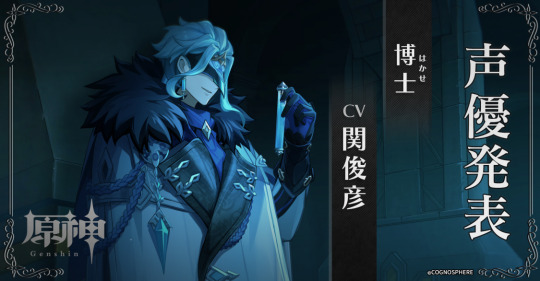
-Dottore

-Pierro
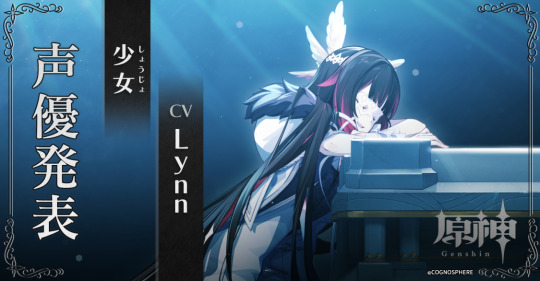
-Columbina

-Pulcinella
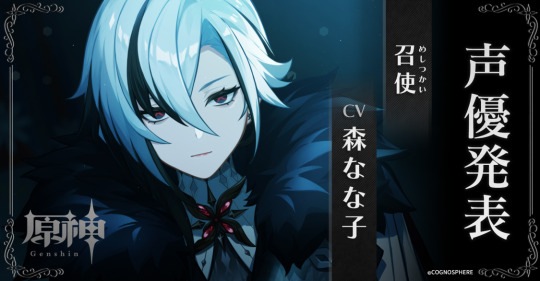
-Arlecchino
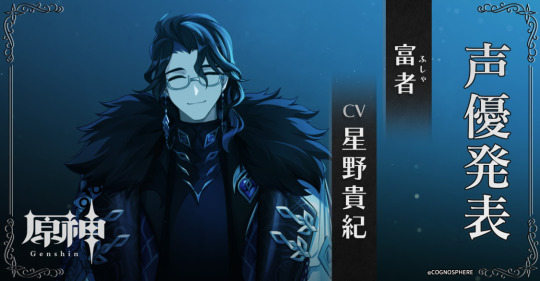
-Pantalone
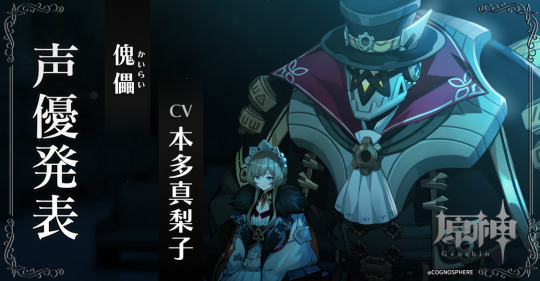
-Sandrone
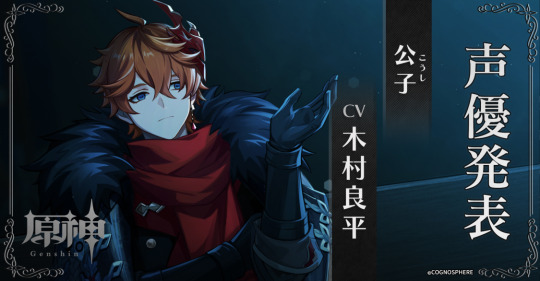
-Tartaglia
#genshin impact#genshin#genshin lore#la signora#genshin tartagalia#fatui harbingers#dottore#genshin theories#genshin fanfics#genshin fandom#原神#shneznaya#pantalone#sandrone#pulcinella#pierro#columbina#arlecchino#oh my they are so hot#Pantalone as dark baizhu#dottore is my fav yandere#Pierro is daddy#Capitano has that je ne sais quoi#i'm dyin here#this is a hell of an harbingers reveal#genshin x you
8K notes
·
View notes
Text
i have this hc/theory abt the ad oblivione, time loops, istaroth and venti (ad oblivione is mentioned in the aranara quest) where istaroth created the ad oblivione by giving birth to the thousand winds - she is time itself while they are erosion, like the sun and its rays! - and let them experience everything in the original timeline, then afterwards she formed the thousand winds into the ad oblivione, creating the time loop, then repeating the cycle with new winds until the loops are complete (yk that note in fontaine that goes through all the calamities/loops? hyperborea, etc? yeah) and mond is the end which is why its so important
venti was a part of the original thousand winds and escaped when istaroth formed the ad oblivione, which is why that note in the thousand winds temple/nameless island is a thing (ill get the actual sources later, just getting thoughts out 😭) and also why he’s considered the prodigal son
reason i wrote this all is bc i was doing ‘research’ (doing my once in a blue moon scroll on twitter and looking at theories) and later saw this poem abt the brain organoids on tiktok and and ☹️
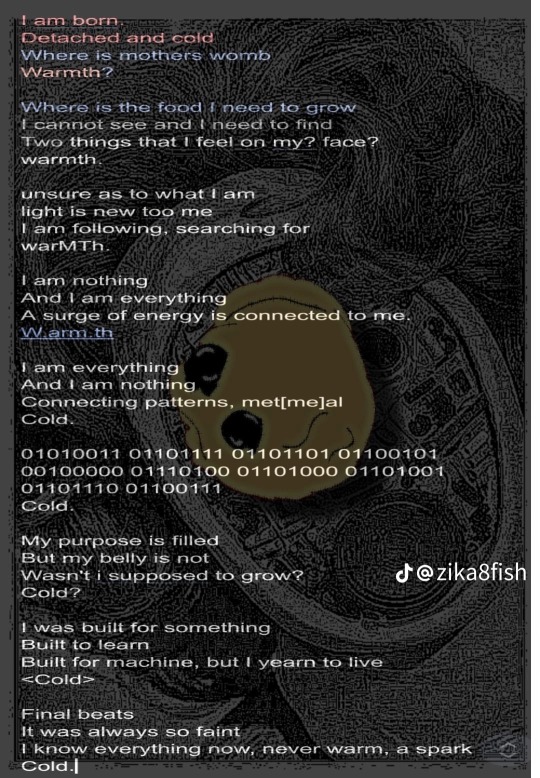
#venti#genshin impact#genshin#genshin venti#genshin barbatos#genshin impact venti#theory#venti headcanons#headcanon#venti theory#venti lore#istaroth#kairos#ad oblivione#thousand winds#ALSO SORRY I NEVER FINISHED ANY OF MY DRAWINGS#i keep getting unmotivated#but im taking anti anxiety so that might help#i will reblog with the sources once i have collected them all#and elaborate on parts that need it!#sorry if this is weird#😭
95 notes
·
View notes
Text
Kabbalah in the Worldbuilding of Genshin Impact; Part 2: Descending to the Garden
Written by Sabre (@paimoff on twitter) and Schwan (@abyssalschwan on twitter)
This theory assumes you’ve completed the Fontaine Archon Quests, as well the Narzissenkreuz questlines. If you haven’t, you will be a) very confused and b) very spoiled.
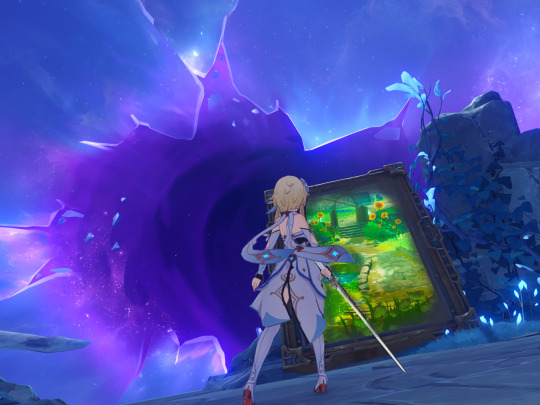
A Tale of Four Descenders
Four entered the pardes (orchard/garden)...one looked and died, one looked and went mad, one looked and cut down the saplings (apostatized), and one came in peace and left in peace [1].
This Jewish legend appears in multiple locations throughout the Talmud and its commentaries, and is associated with two pre-Kabbalah schools of Jewish mysticism known as Merkabah (chariot) and Hekhalot (palaces) mysticism. Both depicted visions of the throne of God (chariot) and the heavenly palaces, and provided instructions for how one might ascend to heaven to receive some kind of revelation or knowledge. The orchard/garden represents esoteric Torah (Jewish law) knowledge; this is why the euphemism for apostatizing is to “cut down the saplings.” (I know he says “blasphemy” (which is different), but this is reminiscent of what Dottore says at the end of Winter Night's Lazzo.)
The pardes legend first appears as a warning to scholars about the consequences of teaching about the “chariot” to disciples who are not ready. Though it's not mentioned in this specific text, this process of meditating to ascend to the palaces of God is referred to as “descending” in the writings of the Merkabah mystics [2].
In other words, this legend tells the story of four descenders.
In the conclusion of the Sumeru Archon Quests, Nahida tells the Traveler about the existence of the “Descenders." Based on the information she got from Dottore in exchange for her Gnosis, she shares that:
Descenders are “external beings, ones that don’t belong to this world”
There are at least four of them, and the Traveler is the fourth
According to the Fatui, the Traveler's twin is not a Descender
The Traveler is not recorded in Irminsul, but their twin is
Nahida speculates that the First Descender is the Heavenly Principles, but the identity of the second and third are unknown to her. At that point though, we still didn’t know what it was that Descenders do, or what the exact criteria for being one is, only that it couldn’t be as simple as just being from outside Teyvat.
The Fontaine World Quest series about the Narzissenkreuz Ordo fills in some pieces of the puzzle; specifically an additional criterion to be a Descender: they must be someone with a will “that can rival an entire world.”
In retrospect, Inversion of Genesis also hinted at the role of a Descender; The Traveler witnesses the results of someone attempting to change fate and/or the world and failing.
Nahida: Changing the world, changing the past, changing the fates of other people... These are not simple things to accomplish.
Nahida: What you were looking for is complete annihilation... But this is just a fantasy. Even if The Balladeer is removed from existence, the world will not heed your will. (Inversion of Genesis)
For most people, actually “changing the world” is impossible. But for a Descender, it might be different.
Will
...Though the results are nothing impressive, this is because the object they chose was pure elemental force, which lacks any will whatsoever. Like the difference between the Director (Lyris) and a Hydro Slime, perhaps?
...Actually thought of a possible breakthrough during the process... Even though the calculated result is unchanged, but if the refinement method is reflected... If the power of... then maybe we can extract the "will" within. Using this method... resist the impact… (Excerpts from Rene's Investigation Notes)
...The true source of the mysterious power unique to this place that the locals call Khvarena is unknown. But based on its ability to eliminate or reverse the influence of the Abyss (in fact, it is a type of annihilation reaction), the two powers are of the same level, that is to say, they are of the same order in terms of rules...
...In other words, both possess the power to "re-write the rules"...
...Regrettably, be it Abyss or Khvarena, all current users are stuck in an "unconscious" stage of being influenced and overwritten by their power… (Bizarre Transcript)
The Gavireh Lajavard region of the Sumeru desert introduced us to the writings of Rene, a precocious researcher with world-saving ambitions and not nearly enough adult supervision, as well as his only slightly Abyss-corrupted bestie Jakob. Like the Khaenri'ahns before him, Rene was searching for a power that had a “will,” believing it necessary to save Fontaine from an unspecified disaster that we would later learn is The ProphecyTM. During their time in the desert (which was right after the cataclysm), Rene determined that both Abyssal and Khvarena power have a will, but pure elemental energy did not.
Some time after their trip to Sumeru, Rene and Jakob would found the Narzissenkreuz Ordo, with the goal of finding a way to save Fontainians from being dissolved in the primordial sea-laced floodwaters. They would do this by dissolving all humans in Fontaine with primordial seawater in a controlled manner, melding everyone together into one Oceanid-like being to survive the apocalypse (think Human Instrumentality Project from Evangelion).
Rene had predicted the coming apocalypse with something he called his “world-formula,” and in addition to predicting the doom of Fontaine, it also informed him that “unlike the world depicted in these ancient texts, there will be no more new civilizations born.” The only way this could be changed would be by introducing a new “‘variable’ from outside the system” into the formula (Enigmatic Page 1). Rene’s goal was to become this variable, i.e., a Descender.
Four Worlds
The Tower of Ipsissimus comes from an old concept from the ancient Fontainian kingdom of Remuria, and was used to describe a powerful will that could rule, sustain, and destroy the world.
This tower was designed by the Narzissenkreuz Ordo, and it represents the evolution of the human soul and the infinite mysteries of the world.
The Narzissenkreuz Ordo believes that people continuously refine themselves through samsara cycles. These include Hyperborea, Natlantean, Remuria, and the first half of the fourth samsara (Khraun-Arya), which we are presently experiencing. Please take note that these are just names given to these eras by the Ordo based on ancient texts, and this evolution refers to spiritual evolution. There is no intent here to antagonize any research results obtained by the Akademiya. The human spirit undergoes the loss of paradise, the defeat of evil dragons, the original sin and baptism, and finally, freedom from the gods.
The term samsara is typically used to refer to the cyclic nature of reality, and can be used to describe concepts like reincarnation. It is not, however, referring to time loops. There is A Lot to unpack about this note, but for the purposes of this theory we will be focusing on the concept of these “four samsaras” and their relationship with the concept of a Descender, specifically that there seems to be the same number of samsaras as Descenders.
You may be wondering - this is Kabbalah world structure theory and we’ve yet to discuss Kabbalah. Well, it’s time now! But before we can get into specifics, we first need to review some terms discussed in Part 1 and then go through some basics of Lurianic Kabbalah.
Ah, the irony of calling anything about Lurianic Kabbalah “basics.” Caveat that what follows will be a simplification of concepts that are very difficult to grasp (I definitely don’t know what’s going on).
Creation of the World, Kabbalah Edition
Previously, we compared the “limitless light” emanated by God to create the world to the power of elemental energy, and compared the sefirot of the Tree of Life to the seven elements. The sefirot are components of this divine light (like light passing through a prism and refracting) and represent attributes of God that are used to create the world. The sefirot are traditionally depicted together in the form of a tree, which maps out their relationships with each other. For more details on the similarities between Kabbalah and Genshin worldbuilding, consult Part 1 (link) if you haven't read it yet.
Kabbalah focuses on describing the relationship between the infinite God and the finite universe and how it was created, with variations between different schools of thought. In this theory, we’ll be primarily focusing on the ideas of the Kabbalist Isaac Luria. The central idea of Luria’s philosophy was a concept he called Seder Hishtalshelut, or “Order of Evolution,” which refers to the cycles of “exile” and “redemption” (creation and destruction) the world is eternally experiencing. In the Lurianic system, time isn’t linear; the world was created in the past, but it’s also being created now.
The beginning of this Order of Evolution is referred to as the Tzimtzum, or Contraction. This refers to the contracting of the infinite God to make a space where reality could be created. Once this is created, a ray of divine light enters the void and begins to emanate reality. This is similar to the concept of the Pleroma in Gnosticism. The further the divine light gets from the source, the more it starts to break down into separate parts. More specifically, it breaks down into the Four Worlds, which represent stages of the evolution of reality, but also stages of the spiritual evolution of the human consciousness.
The Four Worlds are:
0. Adam Kadmon - Primordial (Original) Man
1. Atziluth - Emanation
2. Beriah - Creation
3. Yetzirah - Formation
4. Assiah - Action
Material reality is distinct from these four worlds; the ‘real’ world emanates out of the fourth world, Assiah. Each of these four worlds have their own sefirot structure, which in themselves contain additional sefirot, on and on, like a fractal. Luria called these recursive structures “tree systems” [3]. In Genshin terms, this is like how we have Irminsul, the world tree, but also the other smaller Irminsul trees in domains.

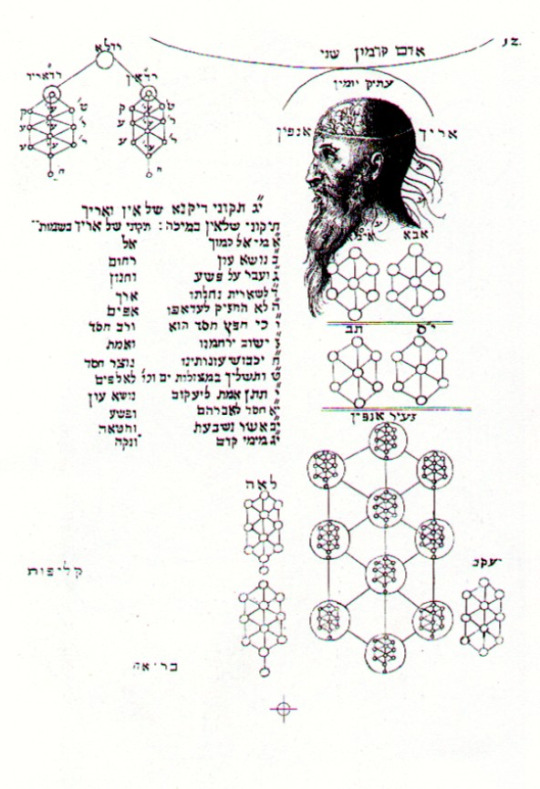
(Fun Fact: this schematic is sometimes called Jacob's ladder)
The system of the Four Worlds and their nuances are very interesting in themselves, but for the purpose of this theory, we’ll be focusing on the 0th world, Adam Kadmon, and the symbolism associated with this concept in both Kabbalah and general Jewish philosophy.
Primordial (Hu)Man
The concept of an ‘original man’ is discussed in Philo’s commentary of Genesis, where he describes this being as androgynous, connected to the concept of Logos, and the Idea/Form of humanity in contrast to the ‘earthly man.’ Philo’s definition of the Logos was something closer to the concept of a demiurge-a being responsible for creation of the world. Logos literally means ‘word’ or ‘reason’, and otherwise typically refers to divine reason, or the word of God.
It’s important to note that here the use of the word ‘man’ refers to a human being, not specifically a male person. Though often described as a man, the Primordial Man of Kabbalah is considered androgynous (like the Primordial One of Genshin).
The Zohar (a foundational work of Kabbalah) describes the Primordial Man as the “image of everything that is above [in heaven] and below [upon earth]; therefore did the Holy Ancient [God] select it for His own form.” The Primordial Man is the personification of the 10 sefirot together and represents a microcosm of the universe (macrocosm) [4].
Narzissenkreuz: I... I sense "reason." Visitors, are you the successors to Narzissenkreuz, or are you a threat?
Narzissenkreuz: Is "Reason" that which grants you such strength?
Narzissenkreuz: No, I have noticed. Have you always been in that realm that I pursue? O, you who are equal to a world! (Waking From the Great Dream)
Man, as he was before his fall [first sin], is conceived as a cosmic being which contains the whole world in itself (Trends in Jewish Mysticism, pg. 215)
Lurianic Kabbalah considers the Primordial Man to be the highest level manifestation of God that can be conceptualized by humans. The world of Adam Kadmon precedes the emanation of the lower Four Worlds, but each of these worlds have their own corresponding anthropomorphic figure as well [5]. In contrast to the worlds that follow Adam Kadmon, the sefirot of Adam Kadmon are not in a Tree of Life configuration, but rather in the configuration known as “upright,’ arranged in the shape of the human body.

The concept of a Primordial Man exists in other religions and mythologies as well. There’s the Gnostic Anthropos, Adam Kasia of Mandaeism, the ‘Universal Man’ (al-Insān al-Kāmil) of Sufism who functions as an Axis Mundi, the world-soul of Platonism, Gayomart of Zoroastrianism, and more. The symbolism of the human body as mediator between the divine and the material world is not unique to Kabbalah. Kabbalah’s version of the World Tree and Primordial Man both function similarly to the Axis Mundi; they are the same emanations of the divine, just arranged in different configurations.
Will and the Primordial Man
In Kabbalah, Adam Kadmon represents the will of God, specifically the will to create. The blueprint for the creation of the world is contained within this being/world, all superimposed together into a “primordial thought.” Within Adam Kadmon, there is no distinction between the individual sefirot, or rather, between anything at all. Everything is contained with this world/thought, but there is no time, no space, and no limitations. WIthout limitations, individual beings and concepts cannot be created. Therefore, the unity of Adam Kadmon had to be broken; specifically into the 10 sefirot, which could then assemble themselves into new configurations and continue the process of creation [6].
Narzissenkreuz: The witness of all, the recorder of all, the designer of all.
Narzissenkreuz: Only one who is worth a world can bear that title. (Waking From the Great Dream)
If the righteous wish to do so, they can create a world.
(Babylonian Talmud, Sanhedrin 65b)
Back in Part 1, we compared pure elemental energy to Kabbalah’s divine light of creation and the ten sefirot to the seven elements. If we apply this analogy to Adam Kadmon, doesn’t a being that could (theoretically) resonate with all elements and would eventually meet their end by being broken up into many pieces sound familiar?
At the end of Act V of the Fontaine Archon Quest, Skirk tells Neuvillette that the Gnoses are actually the “remains of the Third Descender.” Neuvillette, the Traveler, and Paimon speculate that this is possible because as a Descender, they would have also had the same unique compatibility with the elements as the Traveler. Neuvillette’s character stories refer to the remains of the Third Descender as the “seven remembrances,” which were used to create a new “order” for the world, with “all fragments of the primordial…driven to devour each other.”
Rene’s notes in the Tower of Ipsissimus directly tell us that there is a connection between the concept of the Primordial Man and Descenders:
"Lies beneath the great sea" is, itself, an interesting phrase. It comes from ancient Sumeru texts, and should be read as "Narayana*," which also means "primordial human."
This, too, is my goal, for not all that comes from beyond may be as one that "descends." That title belongs only to wills that can rival an entire world.
That is what I seek, the way to become just such a will, one that can protect the world, sustain the world, destroy the world, and create the world.
[*Narayana (Sanskrit: नारायण, romanized: Nārāyaṇa) is one of the forms and names of Vishnu, depicted as sleeping under the celestial waters, and is associated with creation. This reference aligns with Rene’s goal of using the power of the Primordial Sea to make himself a Descender. ]
In summary, we have four Descenders, we have four samsaras, and we have four symbolic worlds that are only able to exist due to the destruction of a 0th world known as the Primordial Man, who represents the totality of the divine Will to create the world and the Idea of humanity.
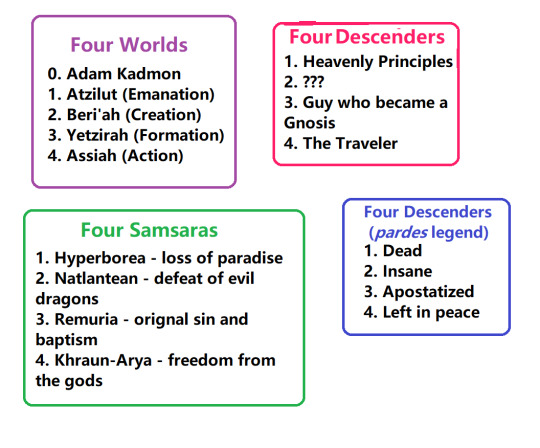
Keep all this information in mind, because before we can discuss the connections between samsaras, Descenders, and the Primordial Man, we must take a detour into alchemy and psychology.
Primordial God Impact
Genshin Impact has always been about the primordial - it’s literally in the name: 原神, or yuan shen, which means ‘original god.’ Many other in-game items share this descriptor, including primogems (原石), Primordial Seawater (原始胎海之水), and the Primordial One (原初的那一位). The same characters are also used in the note from the Tower of Ipsissimus when referring to the ‘primordial human’: 原初之人, which as it turns out, is exactly the same word used for the Primordial Human Project.
The Primordial Human Project has been mentioned exactly once, in a cutscene from the Shadows Amidst Snowstorms event in version 2.3. There, Albedo refered to his doppelganger who had been wreaking havoc on Dragonspine as the “failure of the Primordial Human Project.” Albedo implied that he is the “survivor” of an experiment associated with the Primordial Human Project and considers it to be related to his origins as a creation of Rhinedottir, aka the alchemist Gold.
We know very little about Rhinedottir and her motivations. She’s a practitioner of the Art of Khemia, a member of the Hexenzirkel, is labeled a sinner and blamed for the appearance of monsters during the Cataclysm, made a dragon named Durin and sent him to Teyvat during said Cataclysm, where he caused destruction everywhere he went while thinking he was playing, and might have also made Elynas, who had a similar fate. According to Skirk, she, like Skirk’s master, is “pursuing some form of perfection.”
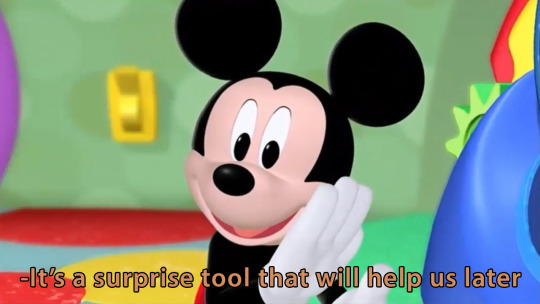
The Great Work
Rhinedottir’s alchemical research was focused on the creation of new life and she was familiar with an alchemical text called the Opus Magnum, which she left behind for Albedo to study. The Opus Magnum is a reference to the real life Magnum Opus, or Great Work, which refers to the alchemical process of creating the philosopher’s stone from the prima materia (original matter). The process typically goes as follows: nigredo (blackness), albedo (whiteness), citrinitas (yellowing) and rubedo (redness).
Later Western alchemy would merge the citrinitas and rubedo steps into just rubedo, or include additional steps, such as the peacock’s tail stage between nigredo and albedo. Notably, the order of the last two steps in this process is reversed in the version of the process Albedo learned from Rhinedottir: rubedo is third, with citrinitas last.
This reordering isn’t universal in Teyvat: Rene’s notes disparage this choice, saying that Khaenri’ah is distracted from the true goal of the process:
..."Red" is the foundational principle, the philosopher's stone*, while "yellow" represents gold and mortal temptation. Yellow is simply bait. Red is the final goal. However, Khaenri'ah would likely seek the truth for gold's sake before turning that truth into a bread production pipeline…
[*This is the first and so far, only, time the phrase “philosopher’s stone” has been directly mentioned in-game.]
Rene has a somewhat ironic take on the Khaenri’ahn alchemical philosophy, given that Albedo’s character stories specifically say “Khaenri'ah was an underground realm, with precious few natural fauna. As such, its alchemy focused more heavily on the creation of life.” Rene often has strong opinions - but why would he care about the order of the Magnum Opus?
The Chymical Wedding of Rene de Petrichor
A recurring motif of the Great Work is the ‘chemical wedding.’ This refers to a union of opposites; male and female, sun and moon, fire and water, sulfur (Red King) and mercury (White Queen), etc, and is often depicted as taking place in a fountain. Here, in this drawing from a copy of the Ripley Scroll, sulfur and mercury wed and form the androgynous (like the primordial man) ‘philosophical child,’ which is philosophical mercury.

Philosophical mercury is the underlying principle or “divine flow” that makes alchemy and transmutation possible. Therefore, the goal of the Great Work was to pin down this mercury into matter through the four (or more) stages of the Great Work and make the philosopher’s stone [7,8].

"The Stone that is Mercury, is cast upon the Earth, exalted on Mountains, resides in the Air, and is nourished in the Waters." (Michael Maier's Atalanta Fugiens. 1617.) The cubes represent prima materia. ;)
The chemical wedding is also used as a motif throughout the story of the Narzissenkreuz Ordo. The Book of Revealing includes a schematic of the “Seal of Chymical Marriage,” which consists of a “Tree of Emanation'' and the “Four Orthants,” and was used to seal the Primordial Sea. The Tree of Emanation component is, of course, a version of the Kabbalistic Tree of Life - for more ramblings, feel free to check out my twitter thread here.
The Narzissenkreuz Ordo is likely intended to be a reference to the real life Rosicrucian Order, and the name of the seal a reference to an important text for this order called the “Chymical Wedding of Christian Rosenkreutz.”
Other possible references to chemical weddings include Lyris being referred to as the ‘Red Empress,’ Rene using her power to dissolve himself and be reborn through the water, and Mary-Ann and Lyris fusing and eventually producing “pure water” aka Ann.
Actually, when you dig into it, there are many suspicious interactions between sun and moon-coded gods in Genshin lore, as well as the doomed wedding of the Seelie and the traveler from afar. My Name For Now made a really interesting video about this, so if you would like more information and speculation, check it out here.
The Philosopher’s Stone and the Self
The philosopher’s stone is the Holy Grail of alchemy: an alchemical substance that can transmute base metals into silver or gold, make someone immortal, cure all illness, make a homunculus, and more. The stone represents perfection and spiritual refinement, either of nature through alchemy, or of the self (the alchemist) [8].
Carl Jung, the founder of analytical psychology, considered the steps of the Magnum Opus to represent the process of the individuation of the self from the collective unconscious. The similarities between his interpretation of alchemical symbolism and the ideals of the Narzissenkreuz Ordo deserve their own separate analysis, but in brief: Jung defined the collective unconscious to be the shared unconscious mind between humans, full of basic instincts and archetypes, which are primordial symbols that exist in many mythologies throughout the world. Jung compared the collective unconscious to the alchemical symbolism of water, which he describes as “wisdom and knowledge, truth and spirit, and its source was in the inner man [9].”
The process of individuation separates aspects of the personality from the unconscious (the water) and then eventually integrates all components together, to form the individual self, which can now bring “order” to the unconscious (at least on a personal level)[10]. In other words, the Jungian interpretation of the Magnum Opus is that the final product, the philosopher's stone, is the Self.
If we apply this symbolism to Rene’s journey, it appears he was attempting to refine himself into a philosopher’s stone, which would explain why he was so interested in the work of the Khaenri’ahn alchemists. As he stated multiple times, his goal was to become a “primordial human,” whose will “can rival an entire world.”
Rene’s philosopher’s stone is a Descender.
The Primordial Human Project
After Rene’s failed attempt to dissolve himself in Primordial Water and be reborn using Lyris’s power, Jakob turned to his own research to try to save Rene and complete his rebirth. In his log of this time period, Jakob wrote:
...I've been interpreting the data in search of a solution and sharing the results with Rene. There has still been no response, but I can already envision his response with perfect clarity: criticizing the Universitas Magistrorum for putting the cart before the horse, neglecting the fundamental principles underlying everything, and diving straight into the details of how to put those techniques to use... How they inverted even the alchemical stages for other purposes…
...It seems that there was an alchemist from Khaenri'ah named "R" who joined a secret order. From what fragmentary records exist, it appears that they made significant headway.
There are two items of note here; the first is the mention of Universitas Magistrorum, which previously had only been mentioned in a namecard description.
The card description reads "O Almighty Sovereign, the Universitas Magistrorum has provided the predictions you requested: The two stars have been captured by the world's gravity…” which may be referencing Khaenri’ah’s summoning of the twins (Inversion of Genesis).
From the context of Jakob’s notes, we can infer that this organization was also utilizing some form of the Magnum Opus for an unknown purpose.
The second item of note is the mention of the alchemist “R,” who is almost definitely Rhinedottir, and the “significant headway” that she and this mysterious “secret order” made. It’s very likely that Jakob is interested in Rhinedottir’s work simply because he wants to make a new body for Rene; the log also mentions Remurian golems and experiments with prosthetic limbs. However, the mention of her and the Universitas Magistrorum in the same context, with Jakob’s commentary on the reversed order of the Magnum Opus, gave me the idea that sparked this whole theory (descent into madness):
Is it possible that Rhinedottir’s Primordial Human Project was intended to make a Descender?
Sometimes, very important lore gets buried in character stories. For example, the first time the term “primordial (hu)man” shows up - which is in Albedo’s fifth character story.
This art of creation was known as "The Art of Khemia."
Albedo had learned of this in his youth from reading his master's notes.
The next stage after "soil" is "chalk," which was also something his master had mentioned.
"Chalk is the spotless soil, and was used to make primordial man."
Now, Albedo understands alchemy in far greater depth than he did in the beginning, and his knowledge on the subject is far more comprehensive.
"From soil was birthed chalk."
The profundity of this statement is well understood by Albedo now.
Albedo is also the “chalk”; Rhinedottir gave him the title of Kreideprinz, or Chalk Prince. She seems to have a habit of naming her creations after types of soil. Durin was ‘humus,’ the Riftwolves are ‘alfisol,’ and Albedo is ‘cretaceus’. According to her, earth is “the basis of all life” and the “accumulated memories of time and lives,” so it makes sense she’d use soil as the starting material for her alchemical creations.
Albedo seems to be aware of the Traveler’s unique status, although he never names them as a Descender. During his Story Quest, Albedo studies the Traveler to get insight on how to help an alien flower bloom.
Albedo: The only other life form that, like you, has come here from afar, is the seed that I mentioned. Under the effects of Teyvat's natural laws, it isn't even able to sprout, let alone bloom.
Albedo: But after I observed you, I had another idea.
Albedo: Imitating you helped to inspire my alchemy, and so...
Albedo: Is not nurturing otherworldly life also nurturing the world itself?
Following the experiments he performs on them, he reveals to the player that he lied about some of their test results, and even compares himself to the Traveler.
Albedo: I made a point throughout of telling them how ordinary the results were...
Albedo: But what was that sediment I saw forming at the bottom of the vial? It should not have been there... What could it mean?
Albedo: Those born of earth are bound by its imperfections, but those born of chalk are free of impurities... You and I are alike, both composed of a substance that has yet to be fully defined...
This leaves us with questions. Assuming Albedo is similar to the ‘primordial human’, what is his role? Is he a Descender, or is he meant to work to become one eventually, like Rene tried to do?
Let’s return for a moment to the Primordial Man and Adam Kadmon. Earlier, we discussed the symbolism of Adam Kadmon; this being represents the divine will to create, also known as the “primordial thought,” as well as the Idea of humanity. Adam Kadmon is the potential for creation unified together, with no distinctions between any concepts. Hermeticism and alchemy have a similar concept, succinctly summed up in the phrase “the all is one,” which can be found written on one of the earlier alchemical drawings of an ouroboros by Cleopatra the Alchemist [11].

In Gnosticism and alchemy, this symbol refers to unity of all material and spiritual things, as well the eternal cycle of destruction and re-creation as things change form [12].
Rhinedottir shared this philosophy, as evidenced by the description for Cinnabar Spindle, Albedo’s sword.
Separate the dust in the flames with joy, and extract the exquisite from the crude.
For all in the universe comes from a single source, and all things may be derived from a single thought.
The weapon description also contains instructions for Albedo that likely tie into his expected role as a success of the Primordial Human Project.
You must pursue that which your elder brother, the one-horned white horse, could not accomplish.
Reach the far side of philosophy, and create a new destiny for myself and your brothers…
Albedo’s final assignment from Rhinedottir is to learn the “truth and the meaning of this world,” a phrase echoed by the Abyss Twin in We Will Be Reunited. Knowledge is literally power in Teyvat: both Nibelung the Dragon King and later, Deshret, utilized Forbidden Knowledge, also referred to as a “power of darkness from outside of this world”, believing it to be the only effective power to defeat the Heavenly Principles. In fact, it’s even possible that the Dragon King was one of the Descenders despite presumably being native to Teyvat. The process of acquiring the Forbidden Knowledge could have evolved him to true Descender status, although this power appears to be incompatible with Teyvat, especially in the wrong hands.
The power of the Forbidden Knowledge is similar to the metaphorical garden of the pardes myth, where out of four “descenders,” only one was able to safely leave, with the esoteric knowledge gained. The philosopher's stone also represents knowledge-it is the lapis philosophorum; literally the 'stone of wisdom'. Knowledge is also how one ascends in Gnosticism, i.e, achieving gnosis.
Perhaps this is the true method to create a Descender and Albedo’s future role: once he reaches the far side of philosophy (learns the truth and meaning of the world) and ‘evolves’ and ‘refines’ himself from albedo through rubedo and citrinitas to the philosopher’s stone, he can change destiny.
This sounds familiar…
Fortuna and Evolution
Rene’s calculations of the world-formula predicted that following the fulfillment of Fontaine’s prophecy, there would be no new civilizations formed from the ruins, as there presumably had been in the past following similar disasters. Rene believed the only way around this was for him to become a Descender, and save Fontaine from the disaster, beginning a new age. It’s implied in the text of the Book of Revealing (the version in the WQ) that the fulfillment of the prophecy would spell disaster for all of Teyvat, not just Fontaine, but even if that were not the intent of Celestia, we can use this example as an analogy for the world-formula of Teyvat.
Rene directly compared the world-formula to the Remurian concept of Fortuna:
Kingdoms rise and fall, and when a civilization is annihilated, a new one will be born after from the ashes, which these books refer to as "Fortuna"... It's somewhat rudimentary, but theoretically at least, it bears striking resemblance to the computational scheme I have formulated and termed "world-formula"...
Let’s spin the wheel of Fortuna and return to the beginning, where we first discussed the four samsara cycles of spiritual evolution and the Four Worlds. Although the samsara cycles don’t refer directly to actual historical events, their names are based on ancient texts. It’s not a large leap in logic to suggest that each of the four samsaras refers to eras in Teyvat’s history- what others in the lore community have been referring to as ‘root-cycles.’ For example, the defeat of evil dragons associated with the Natlantean samsara could refer to the war between the Primordial One and the vishaps described in Before Sun and Moon, or the war between the Heavenly Principles and the Dragon King (which might be the same thing!). The events associated with each samsara must be what ends the samsara, since the fourth, Khraun-Arya, is the current, and represents freedom from the gods, which has not happened yet.
Given that the Descenders can (theoretically) change the result of the world-formula/Fortuna, it can’t be a coincidence that there are the same number of Descenders as there are known samsaras. In addition, if the four samsaras of Teyvat function like the Four Worlds of Kabbalah, that means that a samsara-ending event would be something that results in the evolution of the world. Apep says that during the war between the Dragon King and the Heavenly Principles, Teyvat was in danger of collapsing, and that the victor of the war would “inherit the right to shape the world”. This sounds a lot like Rene’s definition of a Descender: one that can protect the world, sustain the world, destroy the world, and create the world.
The death and disassembly of the Third Descender led to a significant change in the “order” of Teyvat when the Gnoses were created to replace the “ruined” functions of the Heavenly Principles. Put another way, Descenders are able to evolve Teyvat into its next stage of evolution.

The fate of the Third Descender and ruined functions of the Heavenly Principles suggest another, alarming component to the relationship between samsaras and Descenders. It could be that as part of the process, a Descender must replace or repair an aspect of the mechanisms that maintain Teyvat. Don’t worry about the Traveler though; the fourth descender of the pardes legend gets to leave the garden in peace.
On the other hand, the first Descender in the legend is the one who dies, and in Genshin it’s the third, so maybe the list isn’t exactly in order. Of course, this comparison to the legend is partly a joke, but it is very interesting that the metaphor for apostatizing is uprooting trees….
Khaenri’ah’s World-Formula
We know from Rene’s notes that Khaenri’ah had their own version of a world-formula, or at least, their records contained information Rene could use to reverse engineer their predictions. We don’t actually know what he found there, but based on the name he gave the fourth samsara and the whole “freedom from the gods” thing, it seems they were trying to evolve Teyvat into the next samsara and make this freedom a reality. We also know that the Khaenri’ahns were searching for a specific kind of power, a power they referred to as both a “perpetual” energy source and a “secret from beyond the skies” that could “throw off the shackles imposed by this world's laws.” This power from “beyond the skies” is thought to be some form of Abyssal power, and the Khaenri’ahns who used it seem aware of a will contained in that power, a “dogma from beyond the heavens.” In fact, it’s possible that this power is the same as the Forbidden Knowledge brought in by Nibelung, which also had an influence on Apep’s behavior when they were infected with it after eating Deshret.
It appears that Khaenri’ah was familiar with something similar to the concept of a Descender, which makes Chlothar’s words to the Traveler in Caribert all the more impactful.
Chlothar: I never imagined that you, of all people, would deny the Abyss... How ridiculous!
Chlothar: We once believed that you would bring new strength and hope to Khaenri'ah.
Chlothar: To us, you were the Abyss... A wondrous mystery far beyond our imagination and comprehension...
Chlothar: ...And the one who controls the Abyss can control everything!
Chlothar: We yearned for that future. We looked to you to take us there.
The Future
As mentioned previously, the Four Worlds of Kabbalah are all precursors to the actual material reality, which will be emanated (created) from the fourth world. Luria believed that our world was not yet completely realized and needed another spiritual push from humanity to be actualized. (The mechanics of this won’t be discussed here - so consider this a teaser for Part 3 of Kabbalah theory.) Therefore in Kabbalistic terms, this fifth samara, this fifth world, would be the final and true reality for Teyvat.
This would be why Khaenri’ah needed a Descender or even merely a power that could defy the Heavenly Principles. That was why they summoned the twins, and why projects like the Primordial Human Project existed. It’s ironic that in their desire to remake the world in the image of their dreams, where they were free from the gods and the Heavenly Principles, they chose in the end to bind themselves to a will from beyond the sky, which ended up in catastrophe.
As the letter in the Khaenri’ahn ruins of Gavireh Lajavard says: “The gods are untrustworthy and the demons, ineffable. If there is one thing that can pry open the corners of this hollow world, then it can only be human will.”
Congrats on making it to the end! As you can see, this was already reaching a ridiculous word count, so there were some things I had to leave out, or only briefly touch on. So here are some people and concepts I pretended didn't exist so this didn't get (more) convoluted, but you should read about them:
Crowley and True Will, Nietzsche and the overman, Zoroastrianism as a whole, but particularly their version of the Primordial Man, William Blake's prophecies (his Auguries of Innocence is a big inspiration for the artifact lore), Schopenhauer and Will, Atman and Brahman, Plato's concept of the world-soul, SWORDS (in Genshin lore), the Holy Grail legend, and shoutout to Otto Apocalypse the real First Descender.
I do want to point out that some of the (real) people on this list, like Crowley, either were terrible people who believed terrible things, or had their philosophy used for terrible things. This also applies to other inspirations for the Narzissenkreuz Ordo. Please keep that in mind when engaging with these people's work.
On a lighter note:
Sabre’s Fun Fact Science Corner aka Miscellaneous Stuff I Need to Put Somewhere
I didn't want to have to get into explaining the lore of another piece of media but yes, this theory was inspired by a binge watch of the last arc of Fullmetal Alchemist: Brotherhood, transmutation circles and philosopher’s stone and all
On the topic of FMAB, the The Black Serpent Knights archive description states: “The long years and a curse seems to have robbed them of their reason and memory. Now, all that remains within that armor is the will to ‘fight for something, someone, and some matter.’” Funnily enough, the subtitle of the Knights is ‘Aldric’ - Alphonse Elric, anyone?
Caribert becomes the Loom of Fate to “weave his own destiny anew”, Albedo has the Cinnabar Spindle and instructions to create a new destiny - I’m sensing a theme here
Rene believed that getting a Vision was a bad thing in the process of actualizing your Will, and resulted in you selling your fate to the world. So he developed a ritual to remove a Vision from an allogene (this is only mentioned in passing by Caterpillar). So even though Albedo has a Vision, he’s not out of the running to become a Descender. But also Rene was wrong about stuff so ¯\_(ツ)_/¯
The anthropomorphic imagery in Lurianic Kabbalah can get pretty bizarre, but in a fun way if you're into Genshin lore. Adam Kadmon is described as emanating divine light out of his face, specifically his eyes, to create the next world. Genshin eyeball lore is my roman empire.
As a full elemental dragon, Apep had a “world” inside their body. Rhinedottir seems to like dragons a lot; I wonder if she considers them to be similar to the primordial human. Also, there's evidence that the Traveler's elemental abilities mimic those of the elemental dragons, rather than the archons.
References:
Toseftah Hagigah 2:2 Babylonian Talmud Hagigah 14b, Jerusalem Talmud Hagigah 9:1.
Introduction to Kabbalah and Jewish Mysticism - Part 3/14 - Merkabah Shi'ur Komah & Sar Torah
Introduction to Kabbalah and Jewish Mysticism - Part 10/14 - Christian and Lurianic Kabbalah
https://www.jewishencyclopedia.com/articles/761-adam-kadmon#anchor10
https://www.jewishvirtuallibrary.org/adam-kadmon
https://www.chabad.org/kabbalah/article_cdo/aid/380321/jewish/Chaos-and-the-Primordial.htm
https://dpul.princeton.edu/alchemy/feature/the-chemical-wedding
https://www.scribd.com/doc/11441835/The-Four-Stages-of-Alchemical-Work
Jung, Collected Works vol. 14 (1970), Mysterium Coniunctionis (1956), ¶372 (p. 278) via Wikipedia
https://en.wikipedia.org/wiki/Analytical_psychology#Individuation
https://en.wikipedia.org/wiki/Chrysopoeia
https://www.britannica.com/topic/Ouroboros
https://www.gla.ac.uk/myglasgow/library/files/special/exhibns/month/april2009.html
https://alchemywebsite.com/rosary0.html
https://www.alchemywebsite.com/rscroll.html
#geshin impact#genshin lore#albedo#narzissenkreuz ordo#rene is my poor little meow meow#tfw you write a 6000 word theory because you miss albedo so much
177 notes
·
View notes
Text
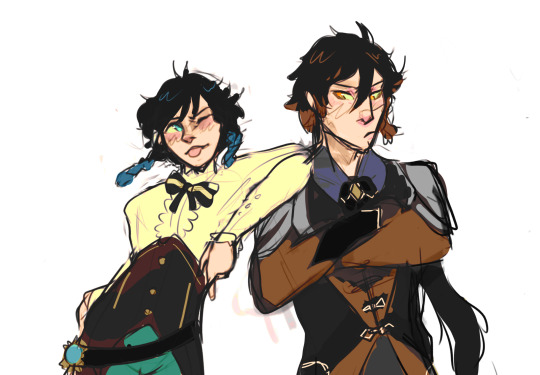
the grandpas!
art for my video talking about natlan and samsaras
#poli's art#genshin impact#genshin#zhongven#venti#zhongli#barbatos#rex lapis#morax#natlan#genshin theory#genshin lore#fontaine#mondstadt#liyue#SORRY FOR ALL THE TAGS LOVE U
343 notes
·
View notes
Text
Gross oversimplification of how Furina & Focalors split works
The hydro archon - Furina + Focalors, one being
Furina, separated - body and spirit of the hydro archon
Focalors, separated - divinity of the hydro archon
Now, imagine that you’re Furina, while Focalors is some aspect of yourself - like your ability to play the piano. This aspect breaks away from you, taking all the memories connected to it - you learning how to play, people you knew in music school, crying over homework, everything. After that, it becomes a formless entity that haunts a piano in your living room, and plays it from the inside, directly on the strings.
Despite this entity being separate, it’s still you, because it’s you that learned the piano, it’s your skills, memories, emotions. This aspect of yourself is incomplete without the rest of you, and you’re incomplete with a chunk of your life missing, but it’s okay because you can still move on without knowing how to play the piano.
Genshin goes out of its way to state that Furina and Focalors are one in the same several times. Focalors is not a clone, sister, mother - she doesn’t even have a body. Focalors is Furina’s allegorical ability to play the piano, she’s the act of “Furina being a god” itself.
#it’s also kinda funny that the original name from ars goetia is focalor not focalors#it may be a coincidence but what if it’s a reference to her splitting into two?#like Focalors - body and spirit + divinity#Furina - body and spirit#Focalor - divinity#anyway#genshin impact#furina#focalors#was fighting for my life on twitter today and got brainrotted into this comparison#hopefully this does make things a bit easier to understand#genshin theory#it's not a theory but i think the tag is useful#genshin lore
187 notes
·
View notes
Text
Small spoilers for Fontaine Archon quest/4.2 update
///
Looking back, outside of maybe Venti, all of the Archons have been « freed » during the Quests: Zhongli is free from his duty, Ei is free from her self-imposed eternity, Nahida is literally free from her prison (and more metaphorically her self-doubt), and Furina is free from her « godhood » (or her performance however you want to see it).
I am not sure what Venti could be free from but being the embodiment of freedom i do believe his relationship with everything that happened is much more complexe than presented.
There is two main things that created and reflect that freedom: meeting Traveller and losing the Gnosis. I have a feeling that they are free because by giving away the Gnosis (for most) they are freeing themselves from the Heavenly Principles.
Actually Venti is the only one where the Gnosis was taken by force (i do think he allowed for it to be stolen). I don’t know what this means but if someone has ideas i’d love to hear them.
216 notes
·
View notes
Text
"Oh Scaramouche should be electro, not anemo! Why would they do that?"
Y'all aren't understanding the symbolism behind it. Electro has been correlated with him through the entirety of him being a puppet. Through Ei, and through the Fatui. Electro has been with him when he has been lost, abandoned, and since he's been a puppet.
With anemo, related to the GOD OF FREEDOM, it's showing that he is now free from the clutches of being a puppet. He's now his own person on his way to create his own path, not one forged by a power hungry military powerhouse. He's free now, no longer chained to the ones that used him.
#sweethoneyfruit talks#scaramouche x reader#genshin men x reader#genshin impact 3.1#genshin impact 3.2#genshin lore#genshin impact theory#genshin impact lore
1K notes
·
View notes
Text
The 4.7 livestream JUST finished, and the Natlan teaser was pretty cool, but I’m once again suspicious about Mondstadt.
Imaginarium Theater, the new combat thing, is a hidden room connected to the Knights of Favonius library, where a stuffed animal creature created by a witch is waiting for someone to take the role of protagonist in these stories.
So like. Did Hexenzirkel set this up before Lisa?? Has this always been here? Like we knew from last year’s Windblume that they had connections with Venti, and obviously there’s Klee and Albedo and Mona, but do they have a historical connection with the Knights specifically too?
Is this hidden library just a farce for hiding history deleted by Irminsul?
Like why is it always Mond with the suspicious and ever-expanding connections to those mysterious witches.
This is why Mondstadt is my favorite. The entire city is really just Chekov’s armory.
#genshin spoilers#genshin impact#genshin 4.7#mondstadt#hexenzirkel hcs#lisa genshin impact#knights of favonius#genshin theory#genshin lore#genshin alice#genshin rhinedottir#genshin nicole
69 notes
·
View notes
Text
[4.0]: A Theory On Rhinedottir, Alchemy, and the Meaning of Sin
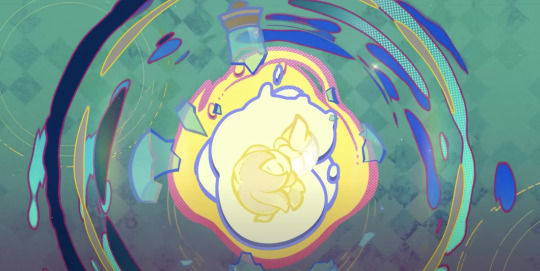
“One thought may end all calamity, and there will always be thoughts that may transcend time.” -The Meaning of Aeons
“Separate the dust in the flames with joy, and extract the exquisite from the crude. For all in the universe comes from a single source, and all things may be derived from a single thought.” -Cinnabar Spindle
I’ve been wanting to do some Rhinedottir speculations for a while. With the new Ancient Colors world quest in Fontaine, I think now is a good time to propose a theory about this mysterious member of the Hexenzirkel, her approach to alchemy, and the reason she is a “sinner,” especially within the context of one of the Archon Quest’s central questions: what does it mean to be “born with sin”?
SPOILERS: Up to Act II of the Fontaine AQ (just Primordial Sea stuff), and Ancient Colors.
Although Rhinedottir is never mentioned by name in Ancient Colors, all of the signs of her are there: Mamere’s identity as an artist, Elynas’ otherworldliness and similarities to Durin, and the differences between the Melusine’s perception of the world and our perception of it (or their aesthetics, which we will touch on later). Ancient Colors is trying to remind us of Dragonspine and, if you were playing during this time, Shadows Amidst Snowstorms, and I believe it is doing so because it is key to the secret of the Primordial Sea and the prophecy of Fontaine.
We’ve heard Rhinedottir’s perspective only twice so far, and that was in the Windblume festival from this last year and in Cinnabar Spindle’s lore. Though we still don’t know much about her, she does identify herself as a “mother” of many children, and that she is raising the only son she has left. This, of course, is Albedo.
We also know that she is considered a "sinner" at the center of the Cataclysm who unleashed "an army of shadowy monsters" onto Teyvat, but we have very little grasp of what exactly is meant by "sinner," and what if any consequences this label has had on her since then. Although every Hexenzirkel witch will undoubtedly be very important to uncovering the truth of Teyvat, Rhinedottir presents a particularly interesting case as the only one whose activities may have caused cataclysmic destruction, as opposed to Alice's general mischief and strange sense of humor.
It’s almost nothing to go off of, but I hope to demonstrate in this speculative theory that it’s more than enough to arrive at some answers.
Psychoanalysis 101, Round 2
To better explain what Durin, Elynas, and Rhinedottir’s other children are, we need to use an analogy rooted in Freud’s psychoanalytic theory of dream interpretation. This is a super TL;DR version of it and way oversimplified, but if you’re interested I wrote a more detailed theory about the significance of dreams in Genshin that has a full explanation of it there. (Also, it should be said that these were just Freud’s theories, please do not take any of the following as an accurate description of the human psyche and how it works. We are just having some fun for the sake of media analysis.)
Freud thought that dreams are the mind’s means of expressing unfulfilled wishes, and that the psychological purpose of dreaming is to “fulfill” those wishes. In A General Introduction to Psychoanalysis, he gives an example of this through a little girl’s dream where she was sailing on a lake: this dream was born out of an unfulfilled wish in her waking life, where she had to stop sailing on the lake despite wishing to continue. Hence, “I wish to sail on the lake” becomes “I am sailing on the lake” through the dream.
Further, Freud thought these unfulfilled wishes are “forgotten” in our unconscious mind when we are awake, censored by the ego to protect our conscious mind, but that at night this censorship is weakened. This is what allows a dream to occur while we sleep.
These unfulfilled wishes are often more complicated than a childish wish to keep sailing on a lake. Think about it this way: a wish is, at its core, a thought in our head, or a desire. What do we do with the thoughts we don’t like, the ones that are unbecoming of us or are unacceptable to fulfill?
We deny them.
Specifically, we repress them into the unconscious, where they are forgotten. Thing is, even if we temporarily forget these thoughts, they won’t just disappear from existence - they fester in the unconscious, waiting to be expressed. The dream, therefore, is the unfulfilled wish/repressed thought’s attempt to cross the boundary from the unconscious mind into the conscious mind - to be acknowledged, or indeed remembered.
“Unfulfilled Wishes”
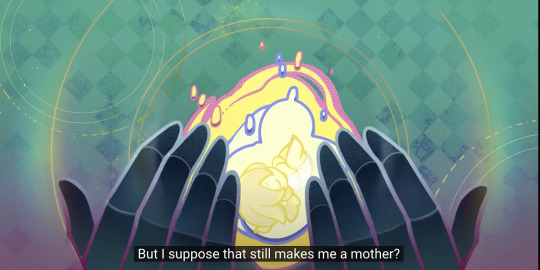
Making sense so far? If so, try to think of Teyvat like this: everything that is visible, everything above ground that the light touches and that can be perceived is like the ego and conscious mind. All of these things are what you’re aware of, things that you “know” and can make sense of, things that you understand, things that fit into rules and laws and order.
Now, think of everything in Genshin that is “unseen” and “unknown”: the Abyss, the spaces underground, forbidden knowledge, things that are “not from this world,” from beyond the firmament…these are like things from the unconscious mind, the repressed thoughts that we deny in ourselves because they may reveal a truth we are unwilling to face. These things are comparatively chaotic in nature, things we’d rather avoid, or things that we wish to forget.
We know that Elynas’ and Durin’s bodies are composed of matter that’s foreign to Teyvat, and that this is a major reason why they are incompatible with Teyvat and cause its destruction. This would make them more similar to a repressed thought, something that we don’t understand or know, and attempting to understand it destabilizes our sense of self, our “truth.” It follows that their home, the Abyss, is most similar to our unconscious mind, and Teyvat is most similar to our conscious mind.

Elynas: Before I was born, I floated in the cosmic darkness. It was cold there, and lonely. I was so sad, then, and I would often cry.
So, as their mother, who or what is Rhinedottir in this analogy? Well, we can be a lot more specific than calling her a “sinner.” In fact, she’s a dreamer, and alchemy is the medium through which she “dreams”:
This was a story from long ago...
Unborn life, unfulfilled wishes,
Tragic dreams at the edge of the universal darkness that could never come true,
Indwell my body, and descend unto this world.
Then, my lovely children,
Like rainwater flowing into creeks, and plants growing towards the sun,
Go unto a lovely place, and display your own beauty there with pride.
This is a memory, a memory that a child named Durin had of his mother…
"Thank you, Mother, thank you."
"You gave me wings to soar and a mighty form."
"Mother, I wish to go to a land of lovely songs,"
"I will tell them about you, Mother, and about everyone else."
"I shall tell them that the place where I was born is beautiful."
-Festering Desire
Rhinedottir’s children, then, are like thoughts or ideas that she is bringing to life, or “making conscious,” by moving them from the Abyss to Teyvat. It may even be the reason why the sword from The Chalk Prince and the Dragon is called Festering Desire in the first place - it’s a reference to the idea of repressed thoughts, wishes, and desires festering in the unconscious.
Should the analogy hold true, it provides some insight into what her intentions may have been in creating her Abyssal dragons. But before that, we need to take a little detour into Enkanomiya and brush up on some lore.
Denouement of Sin
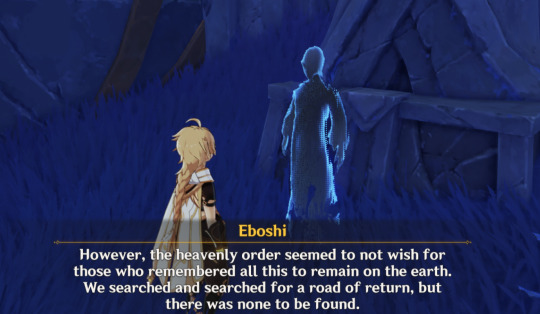
Eboshi: However, the heavenly order seemed to not wish for those who remembered all this to remain on the earth. We searched and searched for a road of return, but there was none to be found.
Remember these hologram-looking dudes? They are the Shades of Tokoyo, also known as Sinshades. They are described as afterimages of the former citizens of Byakuyakoku preserved by Istaroth’s favor, specifically those citizens’ most powerful emotions, and they are only visible during Evernight:
Eboshi: Due to the phenomenon known as Sinshades, the “past,” “history,” and “truth” of Enkanomiya would endure even if left to their own devices.
Eboshi: As such, great effort was expended, not that we might remember, but that we might “forget.” Lady Sangonomiya was of this view.
Like a dream, Sinshades only appear at night, and they are a kind of embodiment of history or “truth” that Watatsumi Island has chosen to forget, representing the thoughts and emotions of those who once lived in Enkanomiya. Using Freud’s theory of dream interpretation as a framework, Enkanomiya then functions as Watatsumi Island’s unconscious mind.
Put another way, if all Sinshades are the result of strong emotions preserved in time through Istaroth’s favor, then those emotions are like thoughts, and that would make the Sinshade a “physical” form or expression of those thoughts. So, when we call the afterimages the “Sins of Tokoyo,” we are in effect calling them the “Dreams of Tokoyo,” because they are the thoughts and emotions of Enkanomiya given form, and that’s what dreams do: they convey thoughts and feelings through a series of images.
Through the Sinshades, we see an implicit association with the concepts of dreaming and sinning in Genshin’s worldbuilding, and through them we understand that they are not so different from one another.
A Brief Note on Aesthetics
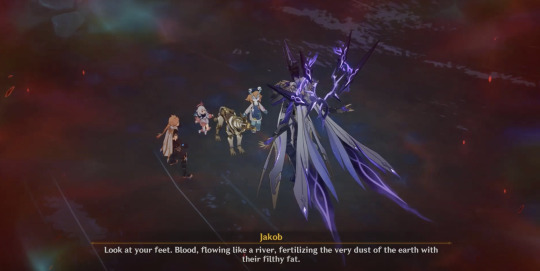
Jakob: Look at your feet. Blood, flowing like a river, fertilizing the very dust of the earth with their filthy fat.
It may have struck you how various Melusine perceive reality in a way that greatly differs from the things we see, as if at times their perception was “flipped,” if not somewhat strange. By the end of Ancient Colors, it’s clear that this is due to the Melusine being born of Elynas, who is not from this world. A similar phenomenon can be seen in both Durin and Elynas, the former imagining itself dancing with the people of Mondstadt before it “woke up” from this dream to Dvalin’s fangs in its neck, and the latter realizing that the things that it finds fun are destructive and harmful to the people of this world.
This is a part of the commentary present in several world quests and commissions in Fontaine that deal with “aesthetics,” or one’s own sense of beauty. Aesthetics are principles that differ on both large and small social scales, varying between groups of people and between individuals (see Salsa’s and Ubu’s aesthetic disagreement), and they can change throughout time as values change. In other words, they are informed by perspectives.
For example, think of what we know so far about the Primordial Sea. Neuvillette wonders how the Primordial Sea could be capable of giving life and then “suddenly reversing itself” so that it instead “devours life,” but this is just his judgment of what the sea does, and ultimately his perspective. Many others view the properties of the Primordial Sea differently from him: to them, the prophecy is comforting because it signals a “return,” or a “homecoming.” To take it a step further, Neuvillette may be making an assumption by stating that the sea has reversed itself. Perhaps this is just how the sea is, perhaps this is its “truth.”

Verenata: The "truth" will not be limited or constrained by the eyes and perspectives of the viewer, and won't be distorted by what is in their heart. It objectively exists, and it just is...like the white sand, like the bones of seastars, like the waves that crash and pound...those are "truth."
Now, imagine that you are staring at a 3D object from a 90 degree angle. If I ask you to describe the object from where you're standing, you'll be able to accurately tell me about what roughly half of the object looks like, but you won't be able to accurately describe the other half of it without help from someone standing on the other side of the object.
But how can you be sure there even is another side of the object, or that it's any different from the one you see now? From your perspective, what is already visible to you may seem sufficient to describe the object in its entirety. In other words, your perspective becomes your "truth."
It is only through considering additional perspectives that we broaden our own understanding of reality and expand on our "truth." However, broadening our perspective is usually not a comfortable experience, as is typical when we engage with ideas that differ from our own. Part of expanding our "truth" requires us to shatter our current understanding, pick up the pieces, and reassemble them into a shape that makes space for these other ideas and their "truth."
For example, when we confront Jakob at Elynas' heart, he describes the rushing currents beneath our feet as Elynas' blood. To the player, who has been swimming around in that for a couple of hours by that point, this idea is macabre and horrifying. However, when we consider Jakob’s perspective, his “truth,” it also expands our understanding of Elynas as a being that is somewhere between dead and alive, sleeping if you will, and that he is more than capable of waking up from his slumber with the appropriate stimulus. Another example is Canotila, who saw the wasteland in Rene's Book of Esoteric Revelations as a peaceful forest. When we consider Canotila's "truth," her aesthetic sense doesn't change the way we see the wasteland, but it does show us something equally important: the way that we experience the wasteland is not the only way it can be experienced.
If we return to the other ever-present metaphor of alchemy as a form of painting, we can see that Rhinedottir’s aesthetic sense greatly differs from what is acceptable and compatible with Teyvat. But, just like Mamere, she paints regardless of whether her paintings are understood by a greater audience. In time, Teyvat's "aesthetics" may change again, and perhaps her "art" will be received differently when that time comes.
Concluding Thoughts
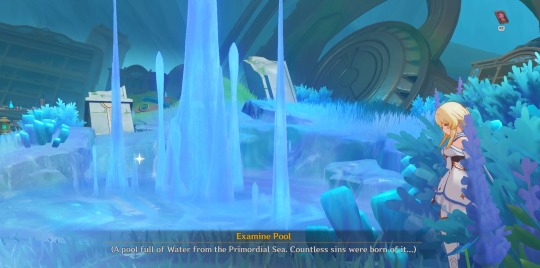
(A pool full of Water from the Primordial Sea. Countless sins were born of it…)
So, that is why I think Rhinedottir was deemed a sinner. She sinned by “dreaming��� up these chaotic life forms that were not from this world, bringing them into being through the Art of Khemia, and telling those chaotic life forms that they were beautiful, too, that the ordered and lawful world of Teyvat just needed to realize how beautiful they were. Maybe Rhinedottir was dreaming of a new world, one where her children’s wishes could be fulfilled, where they could exist with everyone, and maybe creating that world required the destruction of this one. You could also think of her as someone who has introduced “external variables” into Teyvat, which, hmmm..:
“...No matter how many times I derive it, the result remains the same, though this result is not expected... Unlike the world depicted in these ancient texts, there will be no more new civilizations born... Unless we consider introducing "variables" from outside the system... If it was that sort of power, there might be a chance…” -Enigmatic Page I, Book of Esoteric Revelations
In this way, her “children” (thoughts) were all “born with sin,” or are born from sin (dreams). If Rhinedottir is a dreamer, then alchemy is the way that she dreams: it allows her to give forms to these thoughts. And if you buy that, then there are some serious implications to consider from this whole notion of Fontainians being “born with sin,” and just what exactly the Primordial Sea might be. Definitely something to think about while we wait for 4.1.
One last point that is more of an aside than anything else: Rhinedottir’s only remaining child is Albedo, but through this lens we see that he is not just the culmination of the Primordial Human Project, the creation of a human through the power of alchemy, but also the only known example of Rhinedottir’s “ideas” that coexists with Teyvat as it is now. As for her known extant grandchildren, they have integrated with Fontainian society and don’t seem to cause them any trouble. I wonder if she knew something like that could happen?
But…that’s just my take on it so far. What do you think?
(also, fun fact: there is a parallel storyline to this one unfolding in Honkai Star Rail right now as it relates to being deemed a “sinner” for creating life, and another parallel storyline in Honkai Impact 3rd about creation and rebirth and “returning home to the sea” and I just love when Hoyoverse connects their games like that)
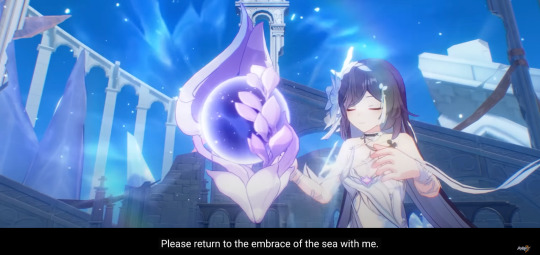
EDIT (9/8/2023): Touched this up a bit and made some grammatical corrections. Thesis is the same, some added support and re-phrasing was done to better convey it.
Sources
A General Introduction to Psychoanalysis by Sigmund Freud
#genshin impact#genshin lore#genshin impact lore#genshin theory#genshin meta#genshin impact meta#fontaine lore#rhinedottir#theory#elynas#durin#melusine#long post
241 notes
·
View notes
Text
Primogems & How They Predicted the Most Devastating Plot Twist of the Game
This item may be the bane of every F2P player's existence and the whale's minor inconvenience to acquire, but I believe that in terms of lore and what the future of the story holds, it can possibly be one of the most blatant warning flags in the game.
Before I go into this specifically, I would like to show you where this post is coming from in earnest.
The one on the left was the beta version of the primogem icon and I have the current one adjacent to it as a comparison.
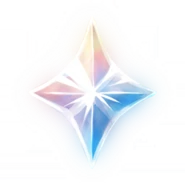

This? This right here? This is just a slap to the face, a true insult, dare I say a gauntlet thrown on the ground in front of me.
You don't know me if you think I'm going to take that shit, so of course, I'm picking it up and I'll have my pistols. Tell me where and when because I'll be there with receipts.
Not only will I argue that the beta design was quite pointed and intentional with how often this specific shape shows up with characters, lore, and the game at large, I will blatantly declare that it is the key to figuring out where this story is going to end.
If you've been here before, you know what to expect from this, and if you're new? Strap in with some snacks and a healthy appetite for questioning the lore because on this blog, we go ham or we go home.
What is a Primogem Anyway?
According to the wiki, the description of a primogem is as such:
"A primordial crystalline gem that's beyond the mundane world. Shines with the condensed hopes and dreams of universes that once were."
The information here is already intriguing in the sense that the words 'hopes' and 'dreams' are used in relation to their appearance as well as the word 'primordial', which roughly means 'from the beginning of time'.
So with that, we have to ask ourselves one question: how do you even get something like that in the first place?
How Do You Acquire Primogems?
Before I go into this, the ways that I am providing are (in my opinion) the only canonical ways that make sense to acquire primogems at all as they have lore, in-game quotes, and things that point to what I believe will tie into primogems either through other topics or their uses.
Genesis Crystals
To start off, the description of a Genesis Crystal is as follows:
"An energy crystal from the very origin of the universe. Formed from within nothingness out of pure potential and hope, it contains enough energy to create a newborn star."
If one looks at the definition of a primogem, one can see that this Genesis Crystal is used to make primogems. This is evident by the in-game application of the '1:1 Ratio' conversion of Genesis Crystals to Primogems.
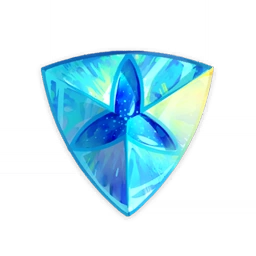
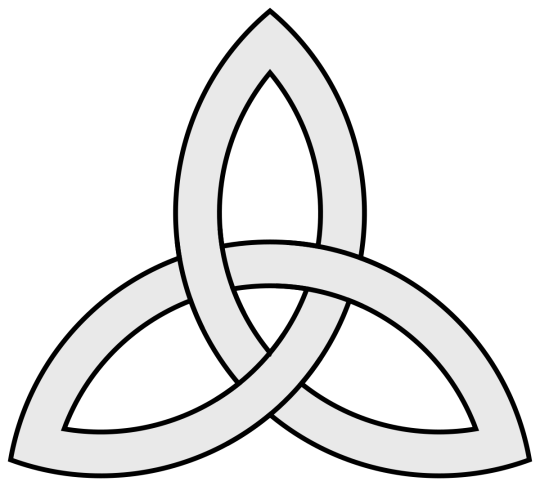
It should also be of note that the distinct shape of the crystal is defined as the 'triquetra'. This symbol has a relation to infinity and interconnectedness, which is interesting as the crystal is used as a source to create a condensed byproduct in primogems, something decidedly 'star shaped'. So with that, you also have to ask how one could acquire such a thing in the first place.
The Blessing of the Welkin Moon - New Moon
Please note that this is not in reference to the product that you can buy in the game, but instead, the new moon variant that one can get in web events. This, however, doesn't mean that the lore is not inclusive of the said products either.
I have an ask that went into some more detail about this in a more speculative nature, but for the sake of this, I will put the description of this object below:
"A ritual prayer, recited on the rising of the first new moon, to ask for the moon's blessing in the form of wealth and good fortune. For your purposes, the new moon you shall pray to is the first-ever new moon in Teyvat, since it's the first one you've seen here."
So, with this, we can assume that:
There is a 'prayer' one must make to acquire both primogems and Genesis Crystals
The moon plays a significant role in this process as the said object only last 30 days (roughly the same length as the moon cycle)
Something else of note that I would like to point out is that the new moon is when the cycle starts specifically. Over these 30 days, one can acquire a total of 2,700 primogems and 300 Genesis Crystals, the same as the standard Blessing of the Welkin Moon you can buy.

This image of The Welkin Moon shows a few symbols that we've already seen, such as the primogems themselves as well as the triquetra, so we can firmly establish that this is indeed a valid way of getting these things. But in relation to the moon cycles and lore that incorporates that as well, one must stumble into places you wouldn't typically expect to find those or primogems at all.
Spiral Abyss - Moment of Syzygy
Primogems? In my Sprial Abyss? It's more likely than you think.
The Spiral Abyss is split into two distinct sections, the Abyss Corridor (Floors 1-8) and the Abyss Spire (Floors 9-12) and as such, I'm only going to go over The Abyss Spire in-depth as they replenish their primogems every cycle (15 days).
A physical description of the Spiral Abyss states plainly:
"A grand underground corridor which leads to an unknown spiral constructed by a great empire that has long gone. What treasures await deep in the palace, and what monsters lurk in the shadow..."
"Surrounded by mysteries, the inverse tower is now known as- Spiral Abyss."
With this description, I believe that this 'great empire' is not Khaenri'ah, but something affiliated with the 'Lunar Palace', something that existed and fell into ruination long before the game is set.
With this context in mind, one can see why the snippet called 'Moment of Syzygy' would say:
"The cycles of the moon elucidate the turning points of fate, and as the gears turn at the beginning and middle of the month, the treasures hidden at the end of the spire shows itself."
From Moment of Syzygy, one acquires 600 primogems per cycle of the Abyss, so given the presence of 'treasure' and the heavy emphasis on the moon, one can assume that you would absolutely find primogems even in such a place and if you don't think so, there is proof.
For example, the word 'syzygy' is defined as 'a conjunction or opposition, especially of the moon with the sun'. This is another term for an eclipse, a phenomenon that also includes three celestial bodies (the moon, the sun, and the earth).
Another example of this is something called 'Blessing of the Abyssal Moon'. These come in distinct phases (every 15 days) and are labeled as the 'Waxing Phase' and 'Waning Phase' respectively, granting boons to any characters fighting in the Spiral Abyss, this imagery is further emphasized by the accompanying images of the Corridor and the Spire respectively:

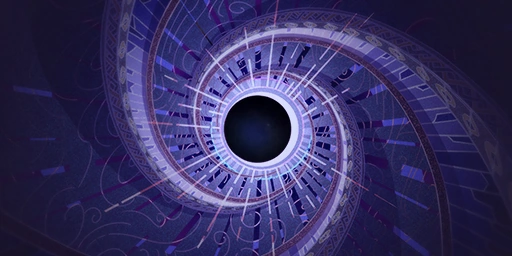
Further on, this Abyssal Moon seems to be a variant of the 'Blessing of the Welkin Moon' as the word 'welkin' means 'the sky or heaven'. So now we have the Heavenly Moon and the Abyssal Moon, two direct opposites in terms of definition and distinct as to what is granted as a blessing.
So yes, you could acquire primogems here with some difficulty. There is, however, another way to do so, though this one might be the most interesting one of all.
Batte Pass - Gnostic Chorus
Please note that I am only referencing the 'Gnostic Chorus' in the teaser trailer and not the purchasable one in the game, although like I've said before, the content in each can be inclusive to each other.
I had some back and forth in my mind concerning the addition of the Gnostic Chorus in this classification, but after looking at the provided dialogue from Venti, I believe it has its place as where one could acquire primogems. The said dialogue is as such below:
"Once, there was a glorious kingdom established among the heavens. From that kingdom came a crowned heir, tasked with seeking out the Genesis Pearl from the Kingdom of Darkness."
"The first crowned heir began her journey of seeking the pearl. But she was deceived, and the memory of her noble origins faded. She now believed that she was the queen of the Kingdom of Darkness."
"But take heart, a second crowned heir had already taken up the path where the first had stumbled. This is the story of your journey, of your tale to be told."
Immediately, one can clock the term 'Genesis Pearl' and can relate that to 'Genesis Crystal', which we have already defined as something essential to how one can acquire primogems as well as going into what it is in its core.
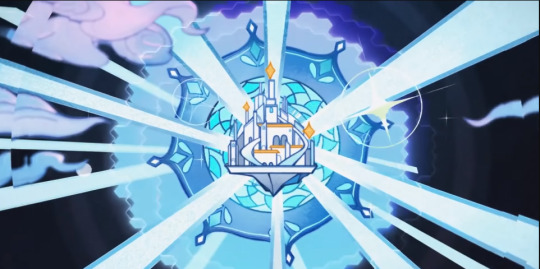
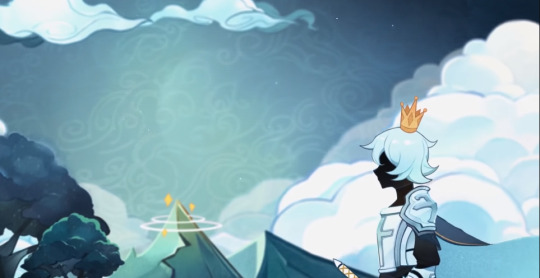
There is also the imagery of the star-like things on top of the city in the heavens and this mountain specifically, which also lends credence to the presence of stars.
This 'Kingdom of Darkness', however, is up for some debate, as it could be Khaneri'ah, the Spiral Abyss, the Abyss itself, Teyvat itself, or something that we haven't come across yet, so I don't have anything conclusive to say about this particular matter.
From the Gnostic Chorus, you can get 680 primogems per pass acquired. As to why I chose to include this boils down to the fact that the story being told in the dialogue is the Traveler's. The story at large can easily be applied to the Traveler as the way the canonical story goes is that Aether is the one to pick up the task. While there are many theorists that think this isn't the case, for the purposes of this and how this will relate later, I will stick with this view.
Why Does All of This Matter?
To summarize what we've gone over, you can get primogems from
Genesis Crystals
The Blessing of the Welkin Moon (New Moon)
Spiral Abyss (Moment of Syzygy)
Battle Pass (Gnostic Chorus)
And the reasons why you can get them from there specifically is because:
A tie to the essences present at the beginning of the universe and frequently emphasized to be from beyond Teyvat
The frequent allusions to the moon and its cycles
The presence of hopes and dreams as material as opposed to abstract ideas
Symbols and lore that coincide with the topics already established
So in this sense, Primogems are not to be understated in any way as they can all be canonically acquired from this.
However, one thing that I haven't gone over until now is what one can do with Primogems after they've got them.
What to do With Primogems?
A primogem's uses are described and laid as such:
Replenish Resin
Unlock levels of the Battle Pass
Acquire Fates (Wishes)
While at first, this may seem like a system in which the game itself operates, the lore that I've also provided points to more of what to expect in the future as well as how the main character (Traveler) interacts with Teyvat at large as there are certain objects only primogems can make:
Original Resin
Acquiant Fates
Intertwined Fates
All of these things have importance to the lore due to how they influence the world around them and how they are used, the original resin being one that brings many things into question.
Original Resin
The uses of original resin are for ley line outcrops, domains, normal bosses, and weekly bosses. However, I will only really be focusing on ley line outcroppings as they are related to the ley lines themselves.
The description provided for original resin is as stated:
"It is said that the roots of all the Irminsul trees and blossoms in the world are intertwined at the deepest, most hidden place in the earth, and that the pattern the root system makes defines the Ley Lines of the world."
It is also necessary to define Ley Lines and the respective outcroppings (also called Blossoms), which are:
"A mysterious network that links the whole world together, within which flow the elements..."
"A flower blossom known as "Revelation" which grows from the Ley Lines in response to someone's desire for battle. Perhaps the treasures within it can help one recall the perils that they have experienced once before..."
"A flower blossom known as "Wealth" which grows from the Ley Lines in response to someone's desires. Perhaps the treasures within it can satisfy a person's monetary desires, for now..."
So to clarify, the original resin would naturally be a part of these as well as the outcroppings and as such, I do find it quite interesting that a certain number of primogems can replenish the Traveler's supply of it at any time it's acquired. This is important because the implication suggests that in theory, the Traveler can do this whenever they'd like.
This original resin can also be used to make something called condensed resin, which is described as:
"Crystal filled with immense energy. The silver-white Irminsul trees and blossoms are connected to ley lines that have become blocked over time. The energy contained in tree resin can purify the obstructing substance."
This implies that with enough of this resin, one could purify (enhance the bounty from the ley line blossom) any unnatural thing that could be obstructing the ley lines, something that primogems could expedite quite speedily in decent amounts. This, however, is nothing compared to what comes next.
Fates
There are no words that can describe how absolutely broken this is in terms of lore and implication, but I can give it a shot.
In short, wishes are the gacha system in the game, but as I've broken down the lore for every item in the game that I have here, it's only natural that acquaint fates and intertwined fates will have some lore of their own as well.
So to start off, the acquaint fates are used on the permanent standard banner. There's a brief description provided here:
"A seed that lights up the night. No matter the distance apart, guided by the stone's glimmer, the fated will meet under the stars."
This likely indicates that this certain type of fate is meant for the standard characters on the banner which will come regardless of the time that passes.
However, one must also take into consideration that the design of the acquaint fate was different from the CBT yet again.


As a result of this, I can no longer believe that the triquetra design is simply a coincidence. Primogems are naturally going to be used to make acquaint fates in this instance as the Genesis Crystals have this motif of infinite interconnectedness and primogems are a part of that cycle.
The intertwined fate lends credence to this statement as its description state:
"A fateful stone that connects dreams. Its glimmers can entwine fates and connect dreams, just as how its glimmer links stars into the shapes of a heart's desires."

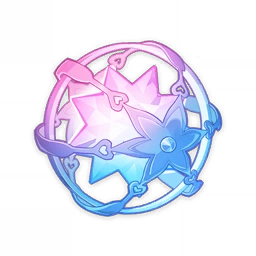
This is painful to me. As if it could not be more obvious than this. We get it. Crystals = Primogems as Triquetra = Infinity. I suppose it had to be changed for that reason, then.
So this description is obviously calling people out every time they pull for the character they want, but a fateful stone that connects dreams? At this point, I'm being handed the motifs and themes within the story without even having to work that hard for them.
As I've stated before, dreams are described within the crystals and the primogems and as such, they are going to have to do with the intertwined fates. However, I will also make the point that this is the first time that it has blatantly said anything about the stars. As the primogem is meant to resemble that shape a bit, the connection is also there.
It is also interesting that the act of using these is typically described as wishes, so in the sense that primogems are described as condensed hopes and dreams, that isn't as far from the truth as one would think.
Byproducts
Speaking of stars, the byproducts of using these fates manifest in objects called masterless starglitter and masterless stardust. These are the remnants of fates and are described as such within the wiki except a point of note would be that they are referred to as a 'surplus of destiny'. This likely refers to the characters and objects acquired.
The descriptions are also more akin to off-hand comments such as 'perhaps it can create new destinies when in large enough quantities' or 'perhaps it can light up other corners of the universe.'
It should be noted that these objects can be used to buy more fates, but it takes a somewhat substantial amount to do so. Depending on which characters are acquired, you can get a decent amount of these, which can be used to buy things from 'Paimon's Bargains', which segues almost perfectly into this final section.
The Bottom Line (+ My Theory)
After taking into consideration everything I have gone over in the eight hours I have hyperfixated on this theory of mine, I have one conclusion and one conclusion only. This starts with a question. A small one, a seemingly innocent one. One that you wouldn't usually pay attention to but with all of this? You have to now.
Why is Paimon, of all people, able to convert starglitter and stardust into fates?
Well, I believe it is because of what has been established over and over again in the entirety of this post. Take a moment to look at her for a second or two.
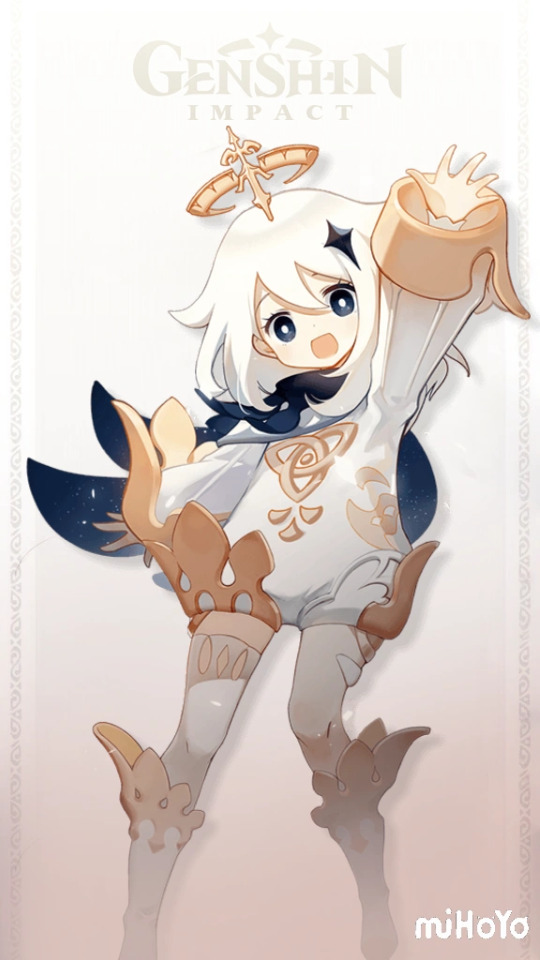
What do you see? Is it familiar? With all that you know now, does it strike a chord within you?
It should, as Paimon is the only character in the game to have both the four-pointed star and the triquetra on their person and character design, and if the 'genesis crystal=primogem' ratio is to be made manifest within the speculation, this means that this little person may be unaware that they are a segment of the universe itself.
People have been saying that Paimon is the Unknown God. People have been saying that Paimon is the final boss of the game. People have been saying that Paimon will betray the Traveler in the end.
Well, I believe that every single one of them is wrong.
Ladies and gentlemen of the viewing party, I submit to you that Paimon is none of those things at all. I submit to you that such petty labels and titles mean absolutely nothing to her in the grand scheme of things. I submit to you that she is simply above them all.
We can discuss Teyvat, Celestia, the Abyss all we want but if this information brought forward is right and primogems really are the established way in which it can manipulate the world for our dearest Traveler and his flying companion? Then who are we to stand against it?
I, Narky, submit to you, the reader, that Paimon is, without a shadow of a doubt, the First Descender.
Do I think that I'm reaching a little bit? Maybe. But does the evidence lie? No, I don't think it does.
To clarify further, no I do not think that the Unknown God and the First Descender are the same people nor do I think that they are on the best of terms. So with that in mind, the theory will make a bit more sense.
Final Notes + Commentary
I've been scouring the internet and the wiki for over eight hours now, so I think I'll end this here.
So . . . what do you think? Will this entire theory be retconned in a future update? Will people much more observant than I pick it to pieces? Am I simply off my rocker and not medicated enough? Pick your poison! As I've said before, we go ham or we go home and I'm sitting in my house.
I would like to thank the Genshin Impact Wiki for having all of this stuff available to scrutinize and read to enable me to do this. All images and quotes I use are from there. I would also like to thank @scalpel-mom-mori for sending me an ask about Khaenri'ahn lore, as this is what got me started on this.
Leave your thoughts, questions, and commentary if you'd like. I'll get to them when I get to them.
Thanks for taking the time to read all of this and maybehaps you took something from it that you can utilize somehow.
Until next time, I see you when I see you.
#narky thinks#going ham#genshin impact#genshin analysis#genshin lore#genshin theory#genshin worldbuilding#AKA: i saw ONE thing and suddenly i'm in the wiki trenches fighting for my life
206 notes
·
View notes
Text
Thinking about how hyv foreshadowed Fontaine's lore through a voiceline of Alhaitham.

Lyney talks about this in the Official Fontaine Trailer.





He then says that whoever chooses the right time, place and people essentially controls this whole show and hints at a possible solution for discerning the truth from lie.

#so basically ; think traveller think#maybe i'm reading too much into it buuuuut who knows#arlecchino's monologue is something to consider as well#because an actor—or in her words a 'good actor' also does the exact same thing#hmm but where does justice fit in all this i wonder#excited regardless#genshin impact#fontaine#genshin impact lore#genshin lore#fontaine lore#alhaitham#al haitham#lyney#genshin impact lyney#genshin#genshin theory
228 notes
·
View notes
Text
The Gnoses aka Dragon's Heart
SPOILER'S BASED ON NEUVILLETTE'S ASCENSION CONCLUSION LINE
hi guys :) sorry i've been out for months lmao <3
"According to Neuvillette, the current Dragon Sovereign of Water, the Gnoses contain the Seven Authorities used by the Seven Sovereigns to command the elements. They were held by the usurpers after being stolen by the Usuper-King, robbing the Sovereigns of true dragonhood." > from the wiki
The first translation of "gnosis" was like dragon's heart and now that aspect is coming into play in game and allowing us to make more informed speculations. If the gnoses are in fact the dragon hearts of the seven sovereigns and are powered by their abilities, and Neuvillette is the newest reincarnation of the Hydro Dragon... We can then speculate that Dvalin is the newest reincarnation of the Anemo Dragon.
(Additionally, the fact that Celestia relied on the sovereign's power in the first place is reflected in the fact that the Primordial one is not of Teyvet, so they need the inside source of power in order to manipulate the world for their desires of total control. Here, I would point our attention to that one achievement, "Colors of The Rainbow: Light can refract into countless colors, but people stop at seven because they're too lazy to count. Perhaps the elements are like that, too.")
In the ending scene of the Mondstadt's archon quest, when Dvalin asks "Is this the power of the Anemo Archon?" makes me wonder both if Venti returned a portion of that ancient power AND how much Dvalin might know about his own origins as a vishap at the least and as the reincarnation of the Anemo sovereign at the most !!
I know Venti taught him to speak and sing, but like... did he really just casually raise a primordial power? ... I suppose that's nbd for a prospective shade of Istaroth though huh.
(i can only imagine how upset the fatui must be if Venti returned the primordial power and thereby rendered the gnosis effectively useless in contacting Celestia)
#genshin lore#venti#venti genshin impact#dvalin#dvalin genshin impact#dragon of the east#genshin theory#celestia theory#mondstadt#mondstadt lore#? maybe#fontaine#genshin impact world building#genshin impact#lily's rambles
127 notes
·
View notes